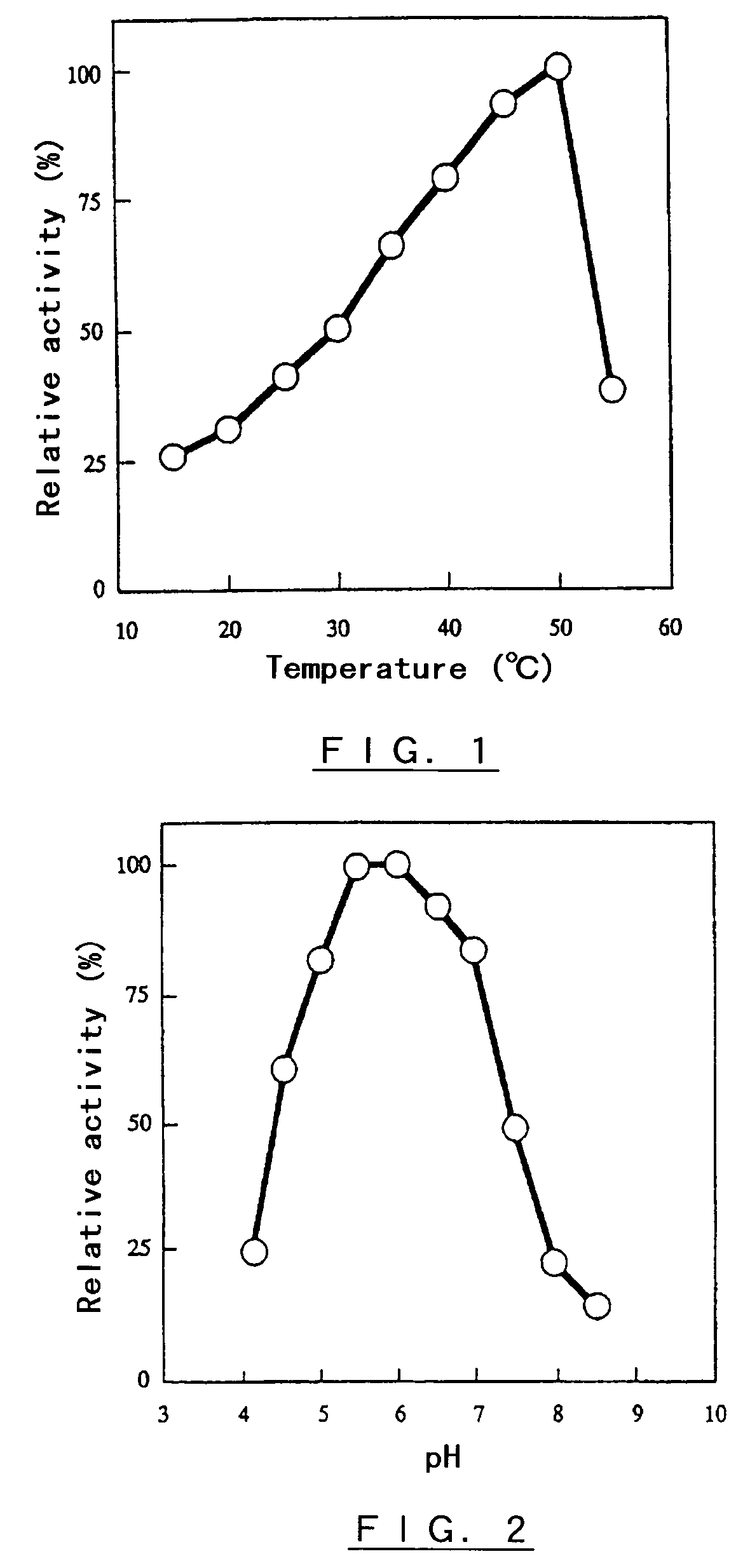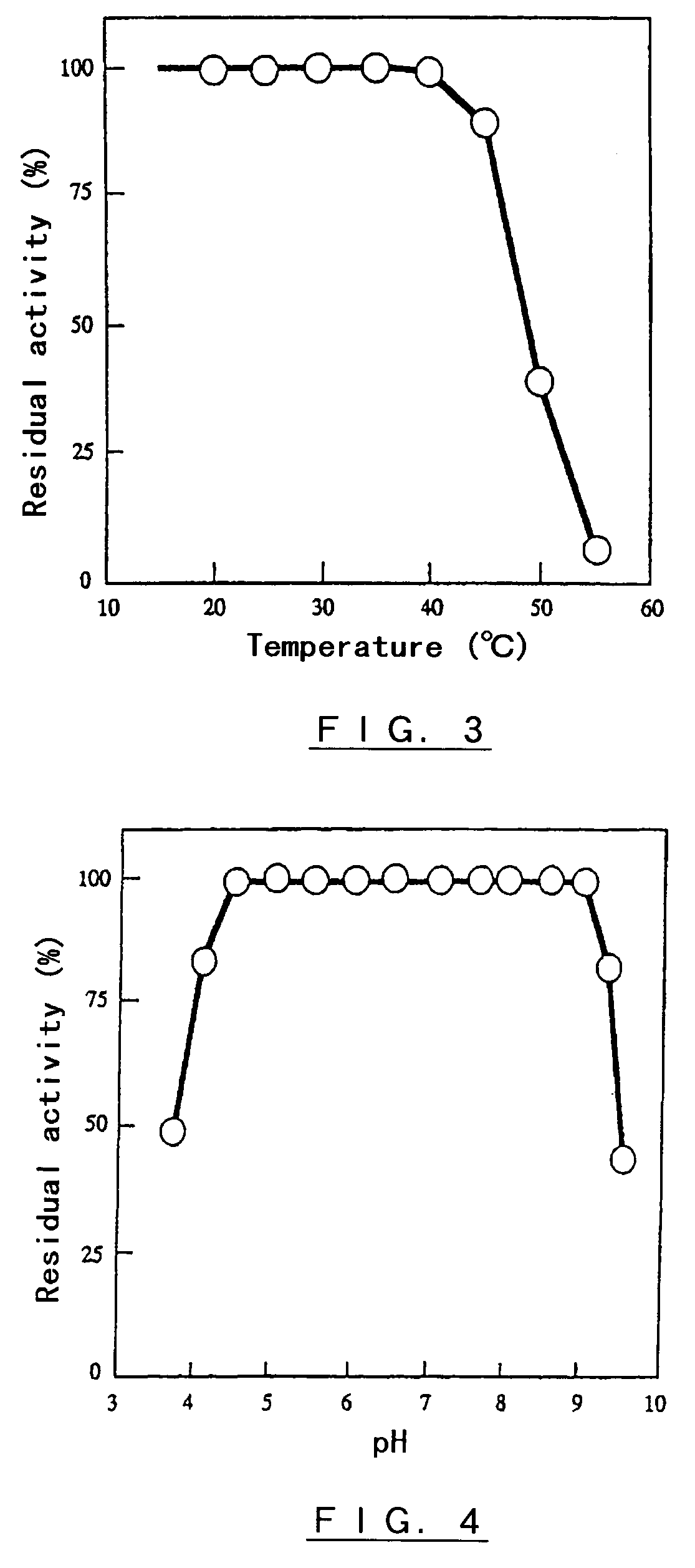Polypeptide having α-isomaltosyl-transferase activity
a polypeptide and isomaltosyltransferase technology, applied in the field of polypeptides, can solve the problems of difficult to obtain alternan as a material and alternanase, the reducing power of reducing saccharides cannot be reduced or eliminated, and the reducing power of reducing saccharides cannot be altered
- Summary
- Abstract
- Description
- Claims
- Application Information
AI Technical Summary
Problems solved by technology
Method used
Image
Examples
experiment 1
Preparation of a Polypeptide from Bacillus globisporus
experiment 1-1
Preparation of Crude Polypeptide
[0109]A liquid culture medium consisting 4% (w / v) of “PINE-DEX #4”, a partial starchhydrolyzate, 1.8% (w / v) of “ASAHIMEAST”, a yeast extract, 0.1% (w / v) of dipotassium phosphate, 0.06% (w / v) of sodium phosphate dodeca -hydrate, 0.05% (w / v) of magnesium sulfate hepta-hydrate, and water was placed in 500-ml Erlenmeyer flasks in a respective amount of 100 ml, sterilized by autoclaving at 121° C. for 20 min, cooled and seeded with Bacillus globisporus C11 strain, FERM BP-7144, followed by culturing under rotary-shaking conditions at 27° C. and 230 rpm for 48 hours for a seed culture.
[0110]About 20 L of a fresh preparation of the same liquid culture medium as used in the above seed culture were placed in a 30 L fermentor, sterilized by heating, and then cooled to 27° C. and inoculated with 1% (v / v) of the seed culture, followed by culturing at 27° C. and pH 6.0 to 8.0 for 48 hours under aeration-agitation conditions. After the completion of the culture, ab...
experiment 1-2
Purification of a Polypeptide having an α-Isomaltosyl-Transferring Enzyme Acticity
[0114]The crude polypeptide having an α-Isomaltosyl-transferring enzyme activity obtained in Experiment1-1 was dialyzed against 10 mM sodium phosphate buffer (pH 7.0) with 1 M ammonium sulfate. The dialyzed solution was centrifuged to remove impurities, and subjected to hydrophobic column chromatography using 350 ml of “BUTYL-TOYOPEARL 650M” gel, a hydrophobic gel commercialized by Tosho Corporation, Tokyo, Japan. The enzyme adsorbed on “BUTYL-TOYOPEARL 650M” gel and, when eluted with a linear gradient decreasing from 1 M to 0M of ammonium sulfate, the enzymatically active fractions were eluted with a linear gradient of ammonium sulfate at about 0.3 M, and fractions with the enzyme activity was collected. The collected solution was dialyzed against 10 mM sodium phosphate buffer (pH 7.0) with 1 M ammonium sulfate, and the dialyzed solution was centrifuged to remove impurities, and purified by affinity c...
PUM
| Property | Measurement | Unit |
|---|---|---|
| pH | aaaaa | aaaaa |
| pH | aaaaa | aaaaa |
| flow rate | aaaaa | aaaaa |
Abstract
Description
Claims
Application Information
 Login to view more
Login to view more - R&D Engineer
- R&D Manager
- IP Professional
- Industry Leading Data Capabilities
- Powerful AI technology
- Patent DNA Extraction
Browse by: Latest US Patents, China's latest patents, Technical Efficacy Thesaurus, Application Domain, Technology Topic.
© 2024 PatSnap. All rights reserved.Legal|Privacy policy|Modern Slavery Act Transparency Statement|Sitemap



